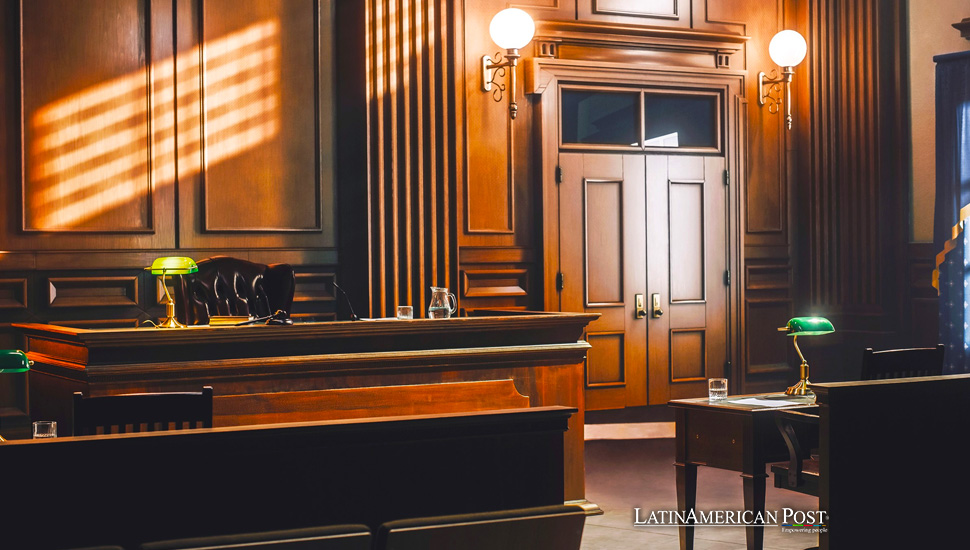Mediation Vs. Courtroom Litigation: A Comprehensive Comparison

When two parties battle it out in a legal dispute, they have a few options on how to resolve it. But the two most common methods are mediation and courtroom litigation. Both routes have their advantages and disadvantages regarding cost, speed, control over the process and outcome, privacy, and more.
Which one to pick, then? This article will provide a comprehensive comparison of mediation vs courtroom litigation to help disputing parties understand the key differences and determine which option may suit their situation best.
Voluntary vs. mandatory process
Mediation is an entirely voluntary process, while litigation can be mandatory.
In mediation, both parties have to agree to participate for sessions to occur. There is no obligation or legal requirement to show up.
In contrast, if one party decides to file a lawsuit, the other party must participate by law once they receive a summon. Refusing to engage in the litigation process once court proceedings have begun can result in a default judgment against the non-participating party.
Formality
The formality level differs greatly between the mediation and litigation settings.
Mediation sessions take place informally around a table with minimal rules and procedures. The mediator guides the discussion, but otherwise, the process is casual with a flexible structure.
Comparatively, litigation occurs in a highly formalized and structured environment with rigid rules of procedure and evidence. Proceedings follow legal protocols, judges wear robes, and failing to adhere to proper courtroom conduct can elicit serious consequences.
The level of formality influences the tone and ability for open communication. For example, the informal nature of mediation facilitates sensitive discussions and solution-seeking in contexts like divorce mediation service, whereas the rigid litigation format often aggravates tensions between divorcing couples.
Speed
Mediation is designed to produce rapid results compared to lawsuits. Rather than getting tied up for months or years in litigation, it provides the opportunity to resolve disputes in a few weeks or months. Because there are fewer procedural requirements, no long waiting periods for court dockets, and no time-intensive discovery or pre-trial processes, mediation saves significant time. If the parties negotiate in good faith, most cases can be settled within just one to three sessions.
In contrast, courtroom litigation inherently takes more time as the wheels of justice don’t turn quickly. In many instances, the court timeline means months or years until resolution.
Cost savings
The expedited nature of mediation also leads to massive cost savings over litigation. Attorneys charge hourly fees, which add up rapidly when involved in court proceedings, motions, research, and long trials, not to mention auxiliary litigation costs like expert witnesses and preparation expenses.
Most research shows mediation costs between 20-50% less than taking a lawsuit through the court system. The total savings can amount to tens or hundreds of thousands of dollars for more complex business or civil cases. Mediation allows parties to avoid sky-high legal bills associated with courtroom litigation.
Control over the process
Mediation provides much more party control compared to courtroom litigation. The involved parties set their own ground rules and voluntarily take responsibility for negotiating the outcome. This creates more satisfaction and buy-in. Judges control the litigation process, while parties in mediation remain empowered over procedural aspects and participate directly in the solution-seeking process.
Parties also exercise more control over choosing their mediator compared to getting a randomly appointed judge.
Overall, mediation’s party-driven procedure gives participants more influence over the way their disputes get resolved.
Privacy
Privacy represents another chief advantage of mediation over public courtroom litigation. Court pleadings and exhibits enter the public record, meaning anyone can access the parties’ sensitive information involved in the dispute. Courtroom proceedings also occur openly.
Mediation, on the one hand, provides a confidential forum safe from public exposure. Parties can speak freely in confidence, admissions cannot get used against them later, and no public record memorializes private dealings.
Preserving privacy helps facilitate open communication, which is critical to reaching mutual agreement. For disputes involving reputation, trade secrets, or other privileged info, mediation gives an alternative to airing dirty laundry under public scrutiny in court.
Solution-focused outcomes
While litigation ends with a “win-lose” outcome where one side prevails based on legal standards, mediation facilitates win-win collaborative solutions reflecting both sides’ interests where possible.
Compromise lies at the heart of most mediated settlements. Parties can craft customized solutions not limited to typical legal remedies. Importantly, both sides must agree to any mediated outcome, ensuring the result gets deemed fair and equitable by all involved. Meanwhile, litigation produces imposed decisions that often leave one party very unsatisfied.
Enforceability of resolution
Initially, mediated settlements held less power than courtroom verdicts, requiring legal enforcement if one party reneged post-agreement. However, modern mediation increasingly ties the negotiated resolution to formal contracts signed upon settlement. Under contract law, these agreements become binding and enforceable in court. Some mediated agreements even enter directly into court orders or consent decrees, giving them the full effect of law identical to litigation judgments.
Emotional considerations
Emotions run high in any dispute. Yet courtroom litigation often aggravates feelings of antagonism between parties through its adversarial, combative structure, pitting opposing sides against one another to “fight it out.”
Mediation provides a more understanding environment focused on finding common interests rather than attacking the other side. Its collaborative structure typically helps reduce tensions and works toward empowering both parties.
Many find mediation provides more emotional satisfaction and closure once a reasonable settlement is reached compared to imposed courtroom verdicts. The cooperative approach aligns far better with repairing damaged relationships in civil disputes.
In conclusion
So, in the great mediation vs. courtroom litigation debate, there are decent arguments to be made on both sides, depending on what matters most to you in resolving the conflict—be it in business or family.
If speed, cost, collaboration, and privacy are priorities, mediation often checks more boxes. But if establishing a formal legal precedent with an airtight decision is crucial, the court brings more to the table on that front.
The takeaway is that it pays to understand the core contrasts between these two options. Once you get clear on the pros and cons of your needs, you can make an informed decision on whether alternative dispute resolution or courtroom litigation is your best bet. Evaluating each case individually by balancing out these strengths and weaknesses helps ensure you get the most productive resolution.


